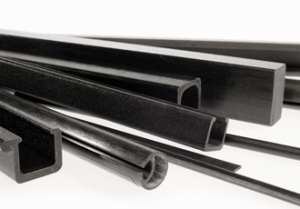The sheet metal MES

Now a key factor in productivity and competitiveness for the sheet metal industry, production management has grown over time, far beyond other factors that have always traditionally been very important. Examples of these include the use of material, calculation of time and costs, elimination of paper, and acceleration of the information transfer process.
An MES (Manufacturing Execution System) is a software system used in production that controls and records the transformation of raw materials into finished products. An MES provides information that helps make decisions on how to optimise production based on the current conditions of a production plant.
An MES normally works in real-time and is connected to the rest of the existing management systems and production elements. It allows for the control of multiple elements involved in the production process: requests, personnel, machinery, or support services.
From Lantek’s point of view, an MES adapted to companies that produce sheet metal pieces, tubes or sheet metal profiles is composed of the following functional units:
- Management of product definition
This includes the assignment of its location in warehouses, version control, and exchange of information associated with each product with other systems. It provides key information to the plant manager, such as production routes, cutting technology, itemisation of materials, or specific characteristics (geometry, material, thickness), all focused on defining how to produce a piece or product.
- Resource management
This includes the registration, modification, and analysis of information associated with each resource, either human or material (workplaces, if the material is to be cut or not), aimed at preparing production orders using the most appropriate resources in terms of capacity and availability.
Based on this structure, a set of data associated with production is created that, with the appropriate analysis tool, may be processed and made available to the manager or higher-level systems.
- Production scheduling
The production of sheet metal pieces, tubes, or sheet metal profiles is rarely a process that can be planned out in the medium-term. Agility, flexibility, and continuous change are desirable characteristics in a metal production plant environment. Furthermore, in the workshop it is necessary to plan out minute details almost immediately, depending on the situation.
Lantek predicts that, in this environment, no one knows how to resolve each situation better than the workshop manager. Therefore, well-organised information is provided to him or her so that timely decisions can be made as quickly as possible, scheduling the work orders that best meet the established requirements and priorities.
These systems must be connected to the business management systems so that business-related constraints can be applied to this schedule.
- Planning of work
This includes the creation and distribution of work to the workplaces. In this step, an appropriate consideration of the concept of nesting, in which pieces from different orders and/or clients can be grouped together, becomes vitally important.
- Execution of production orders
Though the actual execution is performed in process control systems (Lantek Wos), the MES system can perform checks on resources and report on the progress of various production processes to other systems.
In this case, it is also important to have a view of nesting in addition to the work order or request and have the possibility of making last-minute changes to already-set schedules.
- Collection of production data
This includes the collection, storage, and exchange of process data, the status of the various pieces of equipment, pieces pending/in process/finished, real times, material used, and scrap generated. Lantek has different systems (Lantek Wos, Lantek Workshop Capture, Opentalk) to deal with the different scenarios that may occur in an operating workshop.
- Analysis of production performance
This includes the creation of data and information from the raw data generated during production processes. For example, it can provide OEE (Overall Equipment Effectiveness) performance indicators or any other pertinent indicator.
- Monitoring and traceability of production
Recording all of the information related to production makes it possible, both in real-time and once the process ends, to know the status of any element during its processing in addition to the materials and resources used in its manufacture. This makes it possible to regulate quality and traceability when it is necessary to search for the causes of irregularities.
- Integration
An MES system by itself is meaningless in a company today. Integration with other operating systems or company or business management systems is essential for making correct decisions in line with the company's objectives and strategy.
Therefore, Lantek includes various mechanisms for interconnecting ERP/MRP services (Powersync, Avantiaservices) with machines themselves (Opentalk) or even with external CAD/CAM systems. This makes an MES into an open system that cooperates in a dynamic, seamless way for the user along with their environment in the points of the process where it is needed, whether it is definition or validation of production. These mechanisms are possible thanks to the software platform the system is based on, which grants unlimited power of connectivity, even in real-time.
A client that wants to implement a management system in a scenario where there are several companies related to sheet metal — but in which all are not centred on cutting pieces — with several production, logistics, and sales centres and that, given their turnover and the financial control involved, needs a financial ERP able to provide analysis in that area and must choose very carefully which software is going to be used in the specific management of their cutting centres.
The Lantek MES is in charge of providing the solution as it is integrated with an ERP software with specific intelligence on metal production, extending and supplementing what the ERP generally manages.
This solution allows us to focus on optimising the metal, mixing different orders/projects in the same work units, achieving the best possible use of resources, and maintaining the ability to control each piece in detail (which operator and machine processed it, what date and at what time, on what material, etc.)
Lantek Manager is a suitable MES for transforming sheet metal, tubes, or sheet metal profiles because it is a system that is specific to metal. It is modular, scalable, integrated ‘to the core’ with Lantek CAD/CAM software, capable of openly and dynamically collaborating with any system (machine, software) and is accessible from any type of device (web, mobile phone) and from any point.
Similar articles
More from Lantek Systems Ltd
- Advanced manufacturing products to be presented at EuroBLECH 20th August 2018
- Tracing production to get on the road to Industry 4.0 17th July 2018
- MACH 2018 confirms the growing interest in digital transformation 23rd April 2018
- Showing the benefits of the digital factory at MACH 2018 28th February 2018












Write a comment
No comments